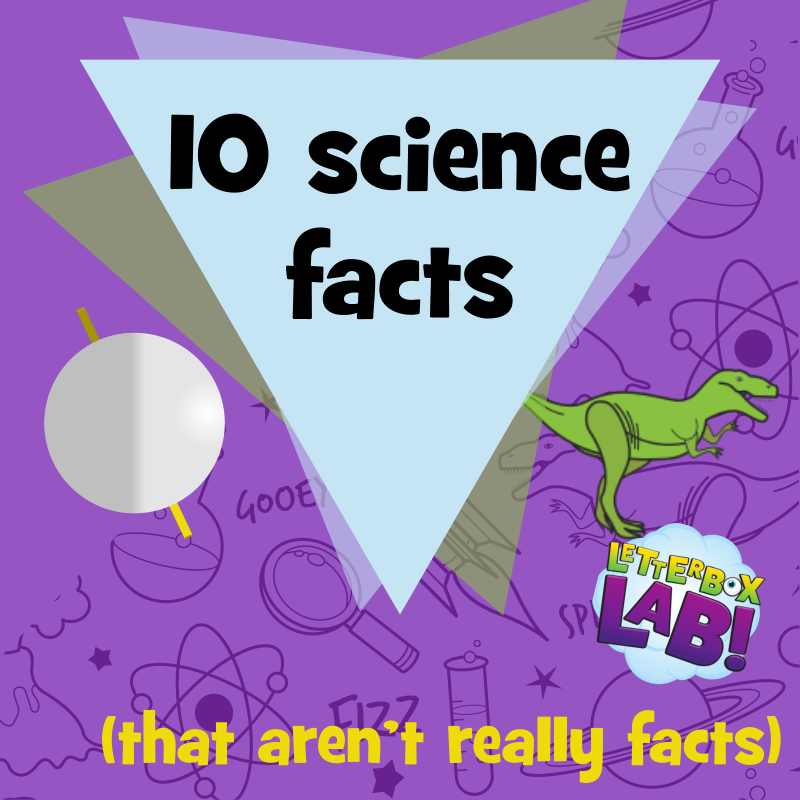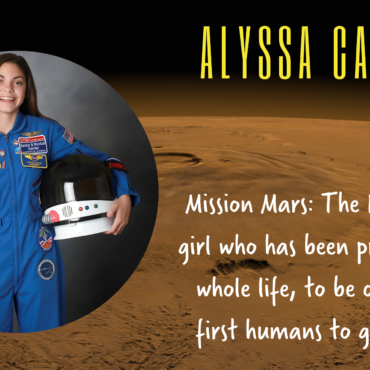We tackle 10 of the most common misconceptions in science and false facts.
We only use 10% of our brain
If only we could unlock that other 90%, we could have super powers! The idea our brains have incredible hidden potential is very appealing and has been spread by self-help gurus and science fiction writers. But it’s completely made up! You’re using more than 10% of your brain right now just reading this sentence. Your brain is 100% useful.
The phases of the Moon are caused by the Earth’s shadow
Lunar eclipses are caused by the Earth’s shadow. The phases happen because half the Moon is always lit up. As the Moon moves around us sometimes we see all of the lit side (what we call a full moon), sometimes we see only a sliver of the lit side (crescent moon). It all depends on the angle at which we are looking at the Moon, which depends on where it is in its 28-day orbit.
Elephants are the only animal that can’t jump
Ever seen a slug jump?
Dinosaurs and cavemen lived at the same time
I won’t hear a word said against the entertainment value of The Flintstones, but it’s portrayal of stone-age life, while definitely hilarious, was not entirely accurate. Dinosaurs lived over 60 million years before anything even slightly human-looking came along.
Incidentally (as a bonus fun fact), this 60 million year gap between the last dinosaur and first human was shorter than the time that elapsed between stegosaurus and T.rex.
It takes 7 years to digest chewing gum
The sugars, sweeteners, oils and flavourings in chewing gum break down with no problems but the gummy part of it is often indigestible. But a small amount of soft indigestible gummy stuff doesn’t sit around in your digestive system for 7 years waiting to be digested. It just comes out a day or two later.
We have five senses
I have a sense of adventure, humour and decorum. What, you’re saying these aren’t real senses? OK, what about heat? Hunger, thirst, balance? The idea that we have only five senses is a centuries old myth and although there is some disagreement over exactly how to define a sense, we definitely have more than five.
There is no gravity in space
Gravity is everywhere, it holds the Moon in orbit around us and the Earth in orbit around the Sun. It’s a bit like The Force in Star Wars “it surrounds us and penetrates us; it binds the galaxy together” except you don’t need midichlorians to make use of it. Astronauts float around in space stations because they and the space station are all moving around the Earth at the same speed, bound by Earth’s gravity.
You shouldn’t swim after eating
This is a nice example of when the theory is perfectly sound but the evidence just isn’t there. The theory is that when you are digesting a large meal blood is diverted away from your muscles to your digestive system. If you then exercise, your muscles won’t get as much oxygen and will cramp. Makes sense, except that there’s never been a single report of drowning caused by cramps from a full belly. Enjoy your swim.
We evolved from chimps
We aren’t descended from chimps, we’re very distant cousins. A very long time ago an animal gave birth to two young, one of which was the ancestor of all chimps and the other of which was the ancestor of all humans.
Bumble bees shouldn’t be able to fly
There’s loads of fascinating things in the natural world that we cannot explain (note to self – idea for a blog!). But the bumble bee is not one of them. There are various stories about the origin of this myth, most of which are probably myths themselves. Personally, I like the idea that it came about from a biologist and an engineer having a few drinks together. After having a glass of wine or two too many, things got a bit wild and they started to do some maths, we’ve all had a night like that yeah? The maths showed that the laws of aerodynamics don’t allow a bumblebee to fly. However, this is only true if you treat a bee as a fixed wing aircraft like a jumbo jet. Maybe, if they’d had a little less to drink they would have remembered that bees actually flap their wings.
Letterbox Lab is a monthly science subscription box for kids aged 6+. We provide exciting science kits through your letterbox so families can have fun playing with science.
Find out more




Add Comment